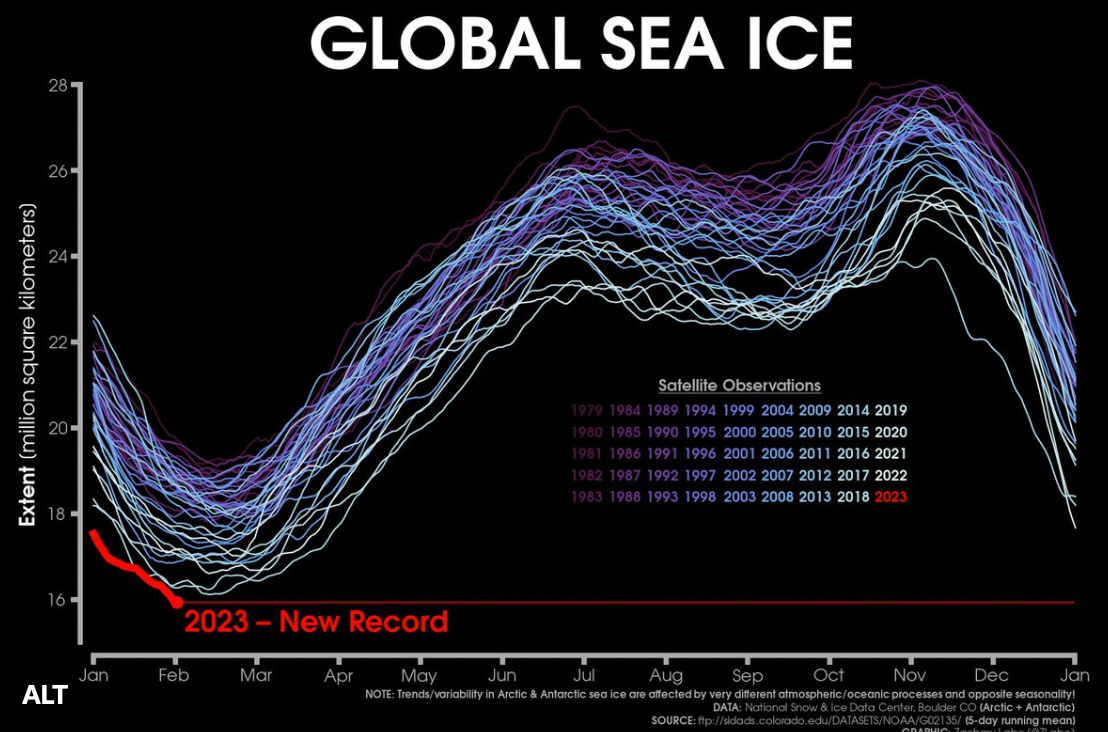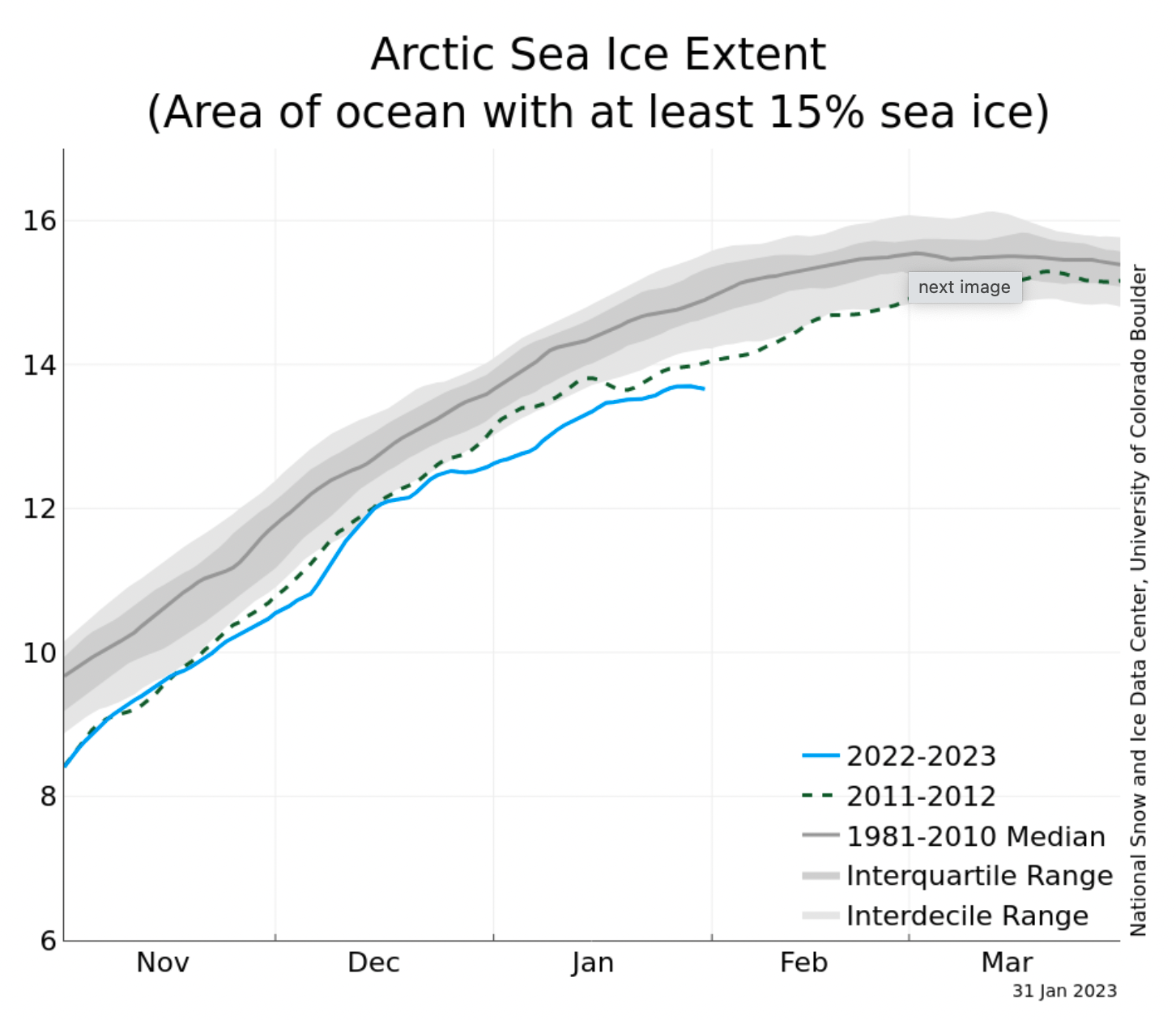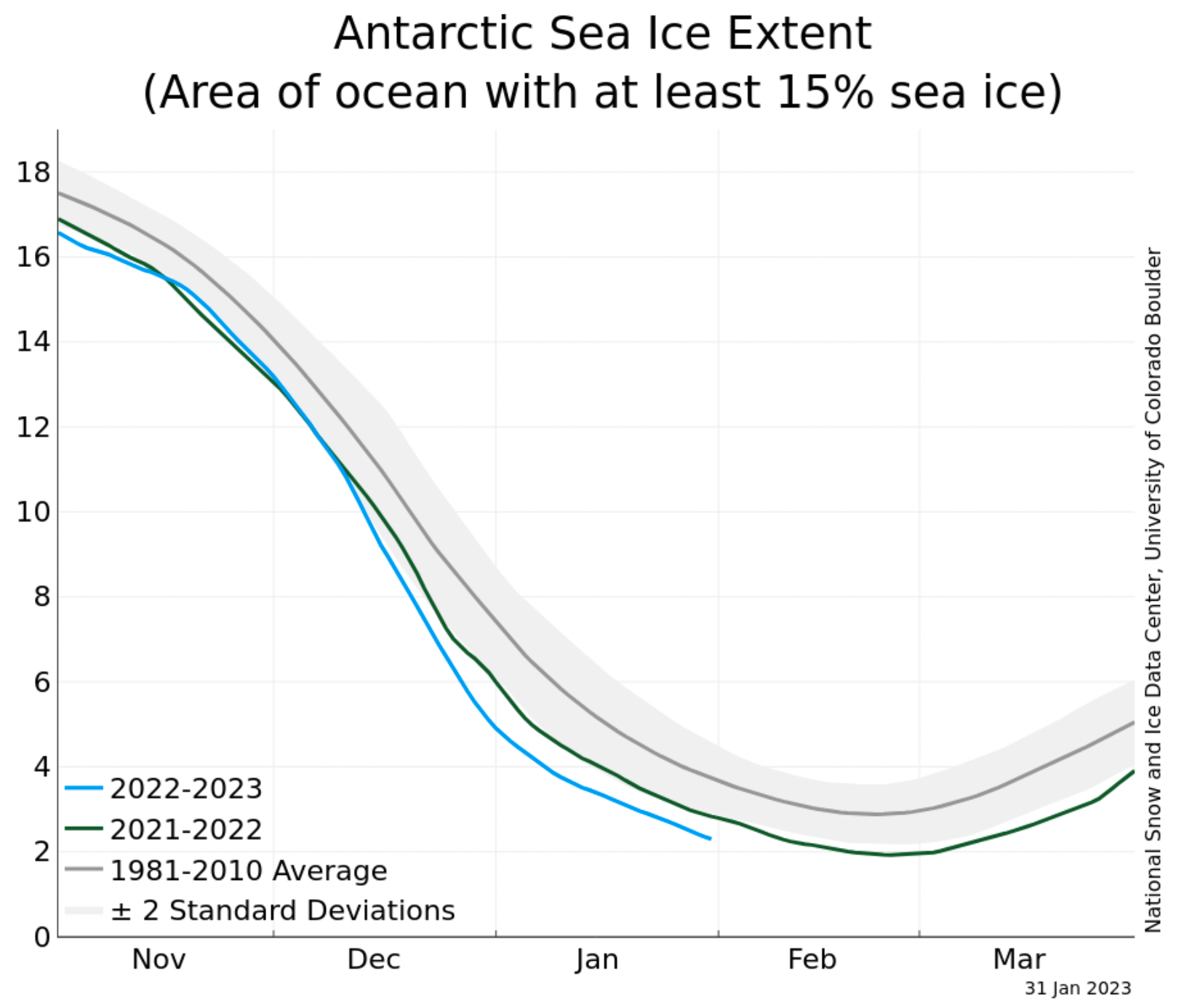
Jonathan Jeppsson
The curves reveal: The world's sea ice is now at a record low
Published: Today 14.31
Updated: Today 16.43
This is a commenting text. Analysis and positions are the writer's.
COLUMNISTS
Wednesday was historic – a new record low was set for global sea ice at the poles.
As early as today's preschool children leave ninth grade, we can experience an ice-free summer in the Arctic.
But it is what is happening in Antarctica that is the great mystery.
This week a grim record was broken - never before has the measured global sea ice at the poles been as small as it is now. It is about the ice that floats on the sea and that grows and shrinks with the seasons.
In the Arctic – the second lowest ever. In Antarctica- low levels, with a lot. What is actually going on?
Since satellite measurements over the Arctic began in 1979, the average area covered by sea ice has decreased by at least 40 percent. The thickness of the ice has decreased by more than half during the same time period.
The development points in a clear direction - if warming and melting continue, sooner or later the Arctic will experience an ice-free summer, with tremendous consequences as a result, when the solar energy that was previously reflected away by the ice is now instead absorbed by the sea.
Previously, the researchers' forecast was that this, called a "blue ocean event", could happen sometime between 2050 and 2070.

Total sea ice extent. Graphics by climate scientist Zack Labe at Princeton University.
Could happen in 2035
But in recent years there have been alarming reports that it may happen much earlier than that.
A study published in 2020 in Nature Climate Change indicates that the ocean is likely to lose its ice cover completely by 2035.
Something is happening very quickly, the researchers said, and we must be prepared that things can go faster than we thought.
But even though it may seem strange that the winter ice in the Arctic grows slowly in the middle of winter, this is something we have been aware of - we already know that the warming is four times faster in the Arctic than the rest of the Earth in the last 40 years .
It is more difficult to understand what is now happening in Antarctica.

Antarctica has resisted in the past. The continent has seemed unaffected by the warming that is taking place at other latitudes.
Admittedly, in recent years there have been several reports about the so-called "doomsday glacier" Thwaites, which is about how water penetrates under the glacier and erodes it from below.
It has been shown how huge cracks in the so-called shelf ice - which lies as a barrier in front of the glacier itself - can cause the outermost part of the glacier to crack and how it can then release an armada of icebergs. A chain reaction where other glaciers in the very long term collapse into the cavity that Thwaites leaves behind, with several meters of sea level rise as a result.

Fell dramatically
But the extent of sea ice has overall had a slightly increasing trend for a long time - it is only in recent years that the curve has fallen dramatically.
Right now, levels are at record lows. But for the researchers, it remains a mystery.
"The current low sea ice extent (...) is extreme, and frankly, we are working to understand why," said Antarctic expert Ted Scambos, researcher at the Earth Science and Observation Center to the Inside Climate News site.
The answer may still lie in the depths. A theory put forward by some researchers is that the warming in the sea around the continent has only now "caught up" in recent years and that it is what is melting the ice.
For decades, some climate models have warned of that development.
Reality has disproved them – until now.
At best, the decline of recent years is just a temporary bump in the curve.
At worst, a very clear warning signal.
Inga kommentarer:
Skicka en kommentar